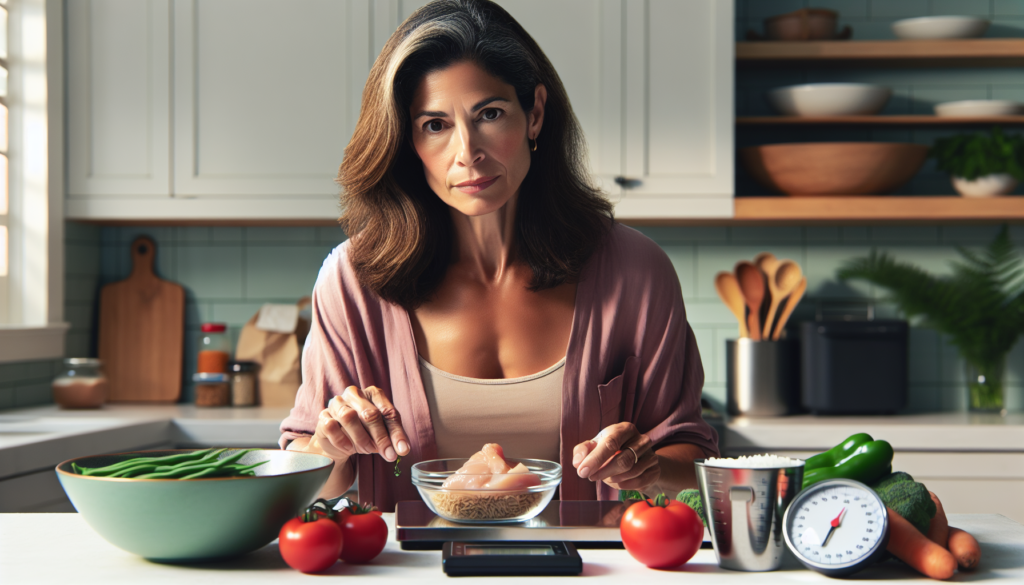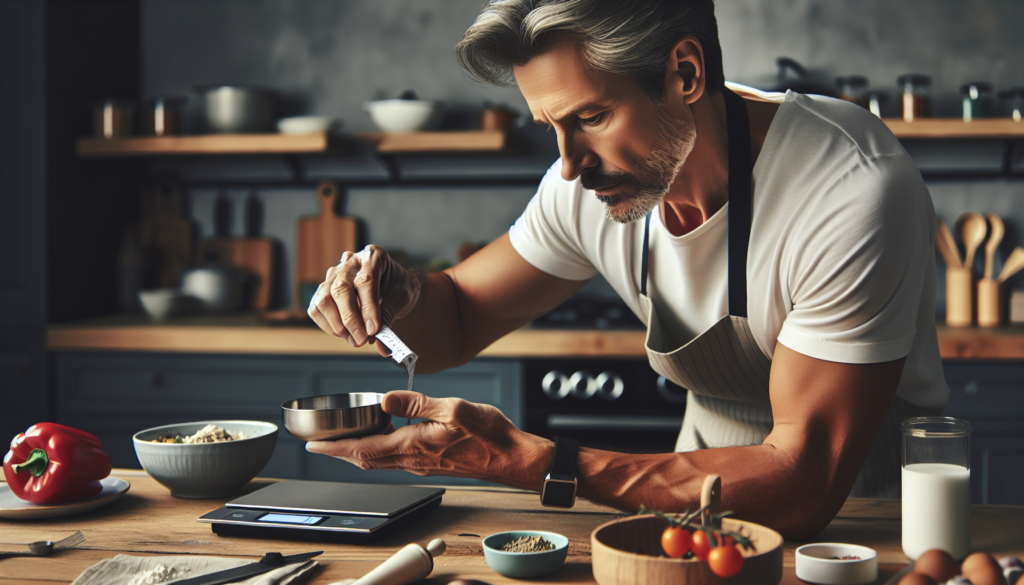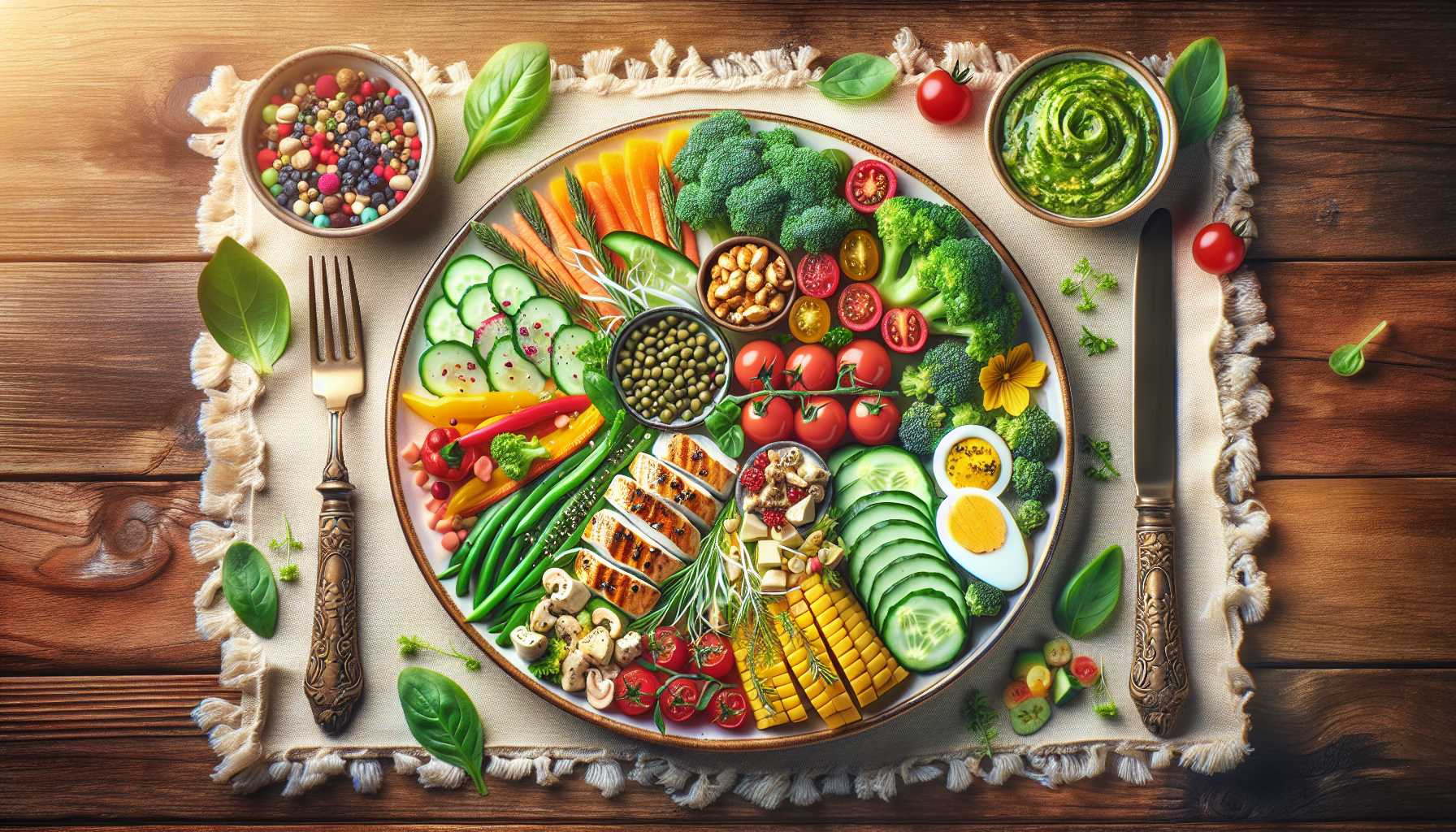Are you tired of ending up with a mountain-sized plate of leftovers every time you cook a meal for yourself? Or perhaps you struggle with overeating and find it difficult to control your portions? If so, fret not, because in this article, we will explore practical strategies to help you master the art of portion control in solo cooking. From understanding proper serving sizes to smart ingredient substitutions, you’ll discover simple yet effective ways to ensure that your meals are perfectly portioned, satisfying, and delicious. So, get ready to take charge of your plate and embrace healthier eating habits without sacrificing flavor or enjoyment.

Understanding portion control
Portion control refers to the practice of eating a predetermined amount of food to ensure that you are consuming the right number of calories for your body’s needs. It involves being mindful of how much you eat and making conscious decisions about portion sizes. By practicing portion control, you can manage your calorie intake and achieve and maintain a healthy weight.
Why is portion control important?
Portion control is essential for several reasons. First, it helps you maintain a healthy weight. By eating the right amount of food, you avoid overeating, which can lead to weight gain. Second, portion control promotes balanced nutrition. When you control your portion sizes, you can ensure that you are getting the right balance of macronutrients and essential vitamins and minerals. Finally, portion control can help prevent chronic diseases such as heart disease, diabetes, and obesity, which are often linked to excessive calorie consumption.
Setting goals for portion control
To effectively practice portion control, it is important to set specific goals that align with your individual needs. The first step in goal setting is determining your calorie needs. This can be done by calculating your basal metabolic rate (BMR) – the number of calories your body needs to function at rest. Various online calculators can help you with this process. Once you have determined your calorie needs, you can identify your portion control goals, whether it’s reducing overall portion sizes or focusing on specific food groups. Creating a plan that outlines how you will achieve these goals is crucial for success.
Tools and strategies for portion control
There are several tools and strategies that can support you in practicing portion control. Using measuring cups and spoons is a simple yet effective method to ensure you are eating the right amount of food. Investing in a kitchen scale can also help, as it allows you to weigh ingredients and accurately measure portions. Portion control plates, which have designated sections for different food groups, can provide visual cues and make it easier to control your portions. Practicing mindful eating, where you focus on the texture, taste, and enjoyment of each bite, can also help you eat smaller, more controlled portions. Additionally, planning your meals in advance can prevent impulsive eating and help you stick to your portion control goals.

Using visual cues for portion control
Visual cues can be helpful in estimating portion sizes without the need for measuring tools. One technique is to use your hand as a guide. For example, a serving of protein can be roughly the size of your palm, a serving of carbohydrates can fit in your cupped hand, a serving of fats can be equivalent to your thumb size, and a serving of vegetables can be the size of your fist. Another method is to compare food portions to everyday objects. This can include using a deck of cards to estimate a serving of meat or picturing a baseball as a reference for a serving of fruit. If visual cues alone aren’t sufficient, you can create portion control aids, such as portioned containers or divided plates, to visually guide your food choices and portions.
Understanding serving sizes
Reading nutrition labels is crucial for understanding serving sizes. Pay attention to the portion sizes listed on the label and compare them to the amount you typically consume. It’s common for people to unknowingly eat larger portions than the recommended serving sizes. Familiarizing yourself with common serving sizes for different types of food can also be helpful. For example, a serving of pasta is typically about one cup or the size of your fist, while a serving of nuts is approximately a small handful. Adapting recipes to fit your portion control goals is another useful strategy. Reduce the amounts of high-calorie ingredients, such as oils or sugars, and increase the proportion of vegetables or lean proteins in your dishes.
Managing portion control when eating out
Eating out presents challenges for portion control, as restaurant portions tend to be larger than what you might serve yourself at home. To manage portion control when eating out, consider choosing smaller portion sizes, such as ordering an appetizer instead of an entree, or selecting a lunch-sized portion. Sharing meals with a friend or family member is another effective strategy. This not only allows you to enjoy a variety of dishes but also helps to divide larger portions into more manageable servings. Additionally, don’t hesitate to ask for a take-out container and box up leftovers to eat at another time. This prevents overeating and allows you to enjoy your meal in moderation.
Dealing with cravings and emotional eating
Cravings and emotional eating can be challenging when it comes to practicing portion control. Understanding the triggers for emotional eating, such as stress or boredom, is the first step in managing these behaviors. Instead of turning to food for comfort, find alternative ways to cope with emotions, such as going for a walk, practicing relaxation techniques, or engaging in hobbies you enjoy. When you do indulge in your favorite indulgent foods, practice mindful eating. Slow down, savor each bite, and focus on the pleasure the food brings you. This way, you can enjoy small portions without feeling deprived.
Creating a supportive environment
Creating a supportive environment can greatly enhance your ability to practice portion control. Stock your pantry with healthy options, such as fresh fruits, vegetables, whole grains, and lean proteins. Having these nutritious foods readily available makes it easier to make healthier choices. Reduce distractions during meals by turning off the television, putting away electronic devices, and focusing solely on your food. This helps you be more present and conscious of your portion sizes. Seek support from friends or online communities who are also striving to practice portion control. Sharing your goals, progress, and challenges can provide accountability and encouragement.
Monitoring progress and making adjustments
To stay on track with your portion control goals, it’s important to monitor your progress and make adjustments as needed. Track your food intake and portion sizes regularly using a food diary or a mobile app. This allows you to identify patterns, areas of improvement, and celebrate your successes. Evaluate your progress towards your goals regularly. If you find that you are consistently overeating, adjust your portions accordingly and explore potential triggers for this behavior. On the other hand, if you are consistently undereating, make sure you are fueling your body with enough nutrients and adjust your portions upwards if necessary.
Conclusion
Mastering the art of portion control is a valuable skill that supports maintaining a healthy weight, balanced nutrition, and overall well-being. By understanding portion control, setting realistic goals, and utilizing tools and strategies, you can effectively control your portion sizes. Whether it’s using visual cues, understanding serving sizes, or managing portion control when dining out, there are various techniques to incorporate into your lifestyle. Remember to be kind to yourself, as portion control is a learning process. With patience, practice, and a supportive environment, you can successfully achieve your portion control goals and enjoy a healthier relationship with food.
